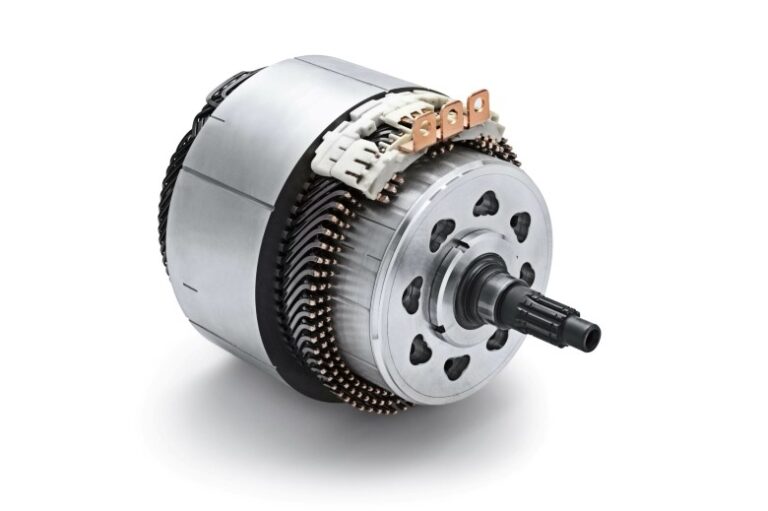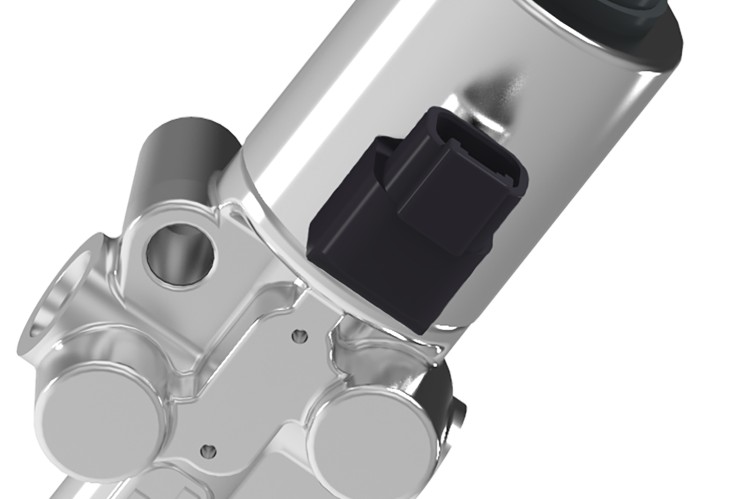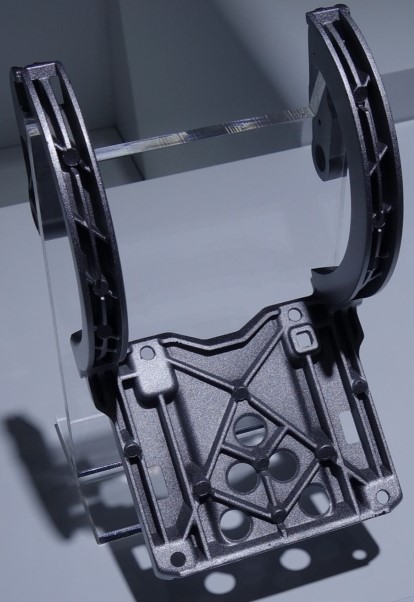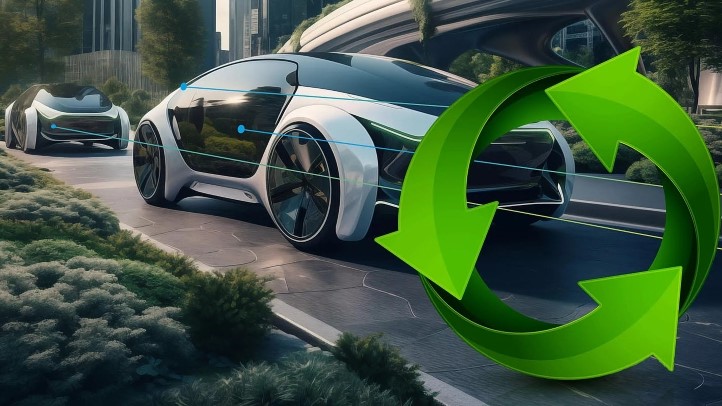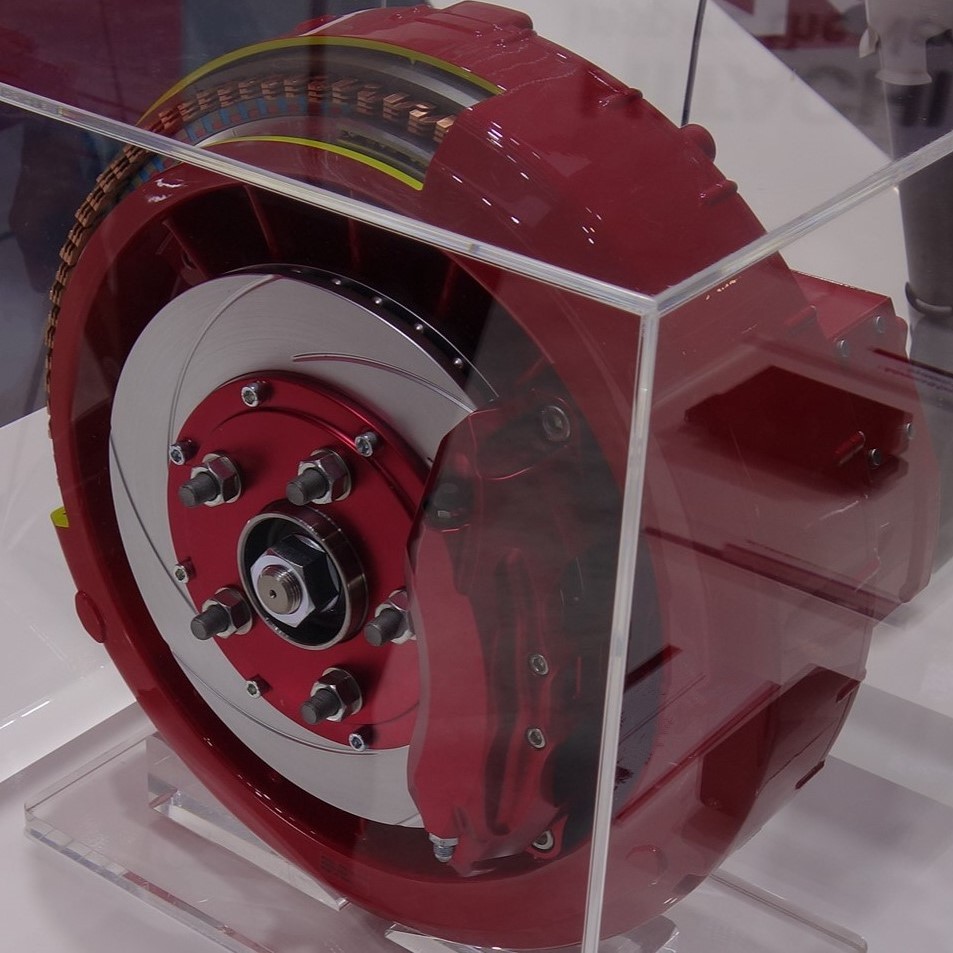
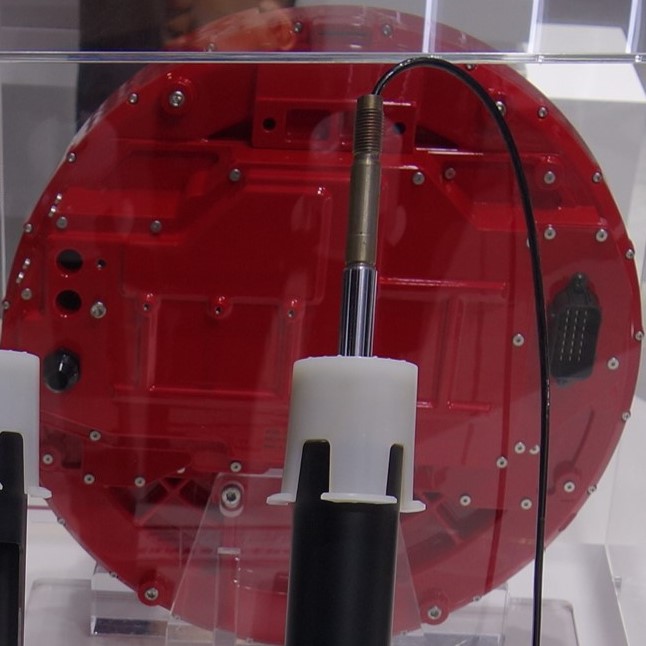
Increasing the number of magnetic poles is effective in improving a motor’s drive force, but has shortcomings-namely, that it reduces the proportion of magnetic flux that can be effectively used, and necessitates more coil weld points and welding space. By placing the magnets in a Halbach array, Hitachi and Hitachi Astemo have succeeded in improving drive force by increasing the effective magnetic flux of each magnetic pole, and made the motor lighter by using beam welding to create a high-density array of flat coils, thus achieving world-class 2.5 kW/kg power density. This limits the in-wheel weight increase of the EV, and avoids the increased energy consumption that’s characteristic of conventional, heavier in-wheel systems.
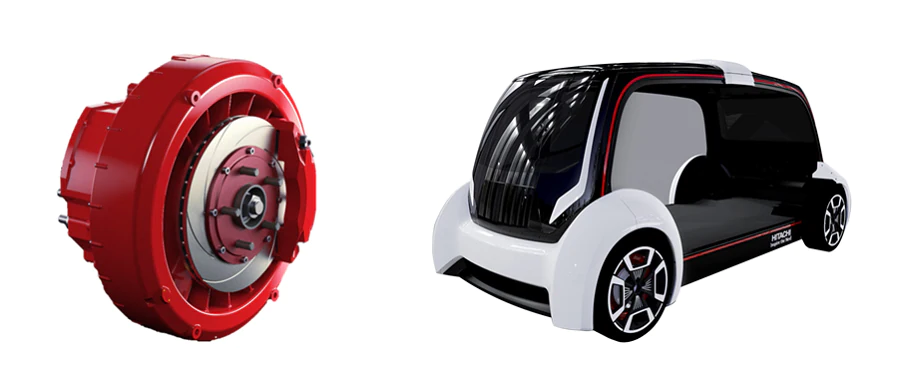
Prior EV motors have low power density and monopolize space inside the wheel to provide sufficient drive force, which make it difficult to use existing brakes and suspension components. Space is also needed for a dedicated and electrically insulated coolant channel, which prevents electrical faults from occurring when power semiconductors in the inverter come in contact with coolant. The newly developed system uses direct-cooling technology, in which high-insulating cooling oil directly cools the power semiconductors and is cycled to the motor to directly cool the coils. This combined with the single-unit drive system-which integrates a motor, brake and inverter-significantly reduces the space taken up by cooling pipes, and enables in-wheel installation without having to significantly alter the existing configuration of suspension and other components.

